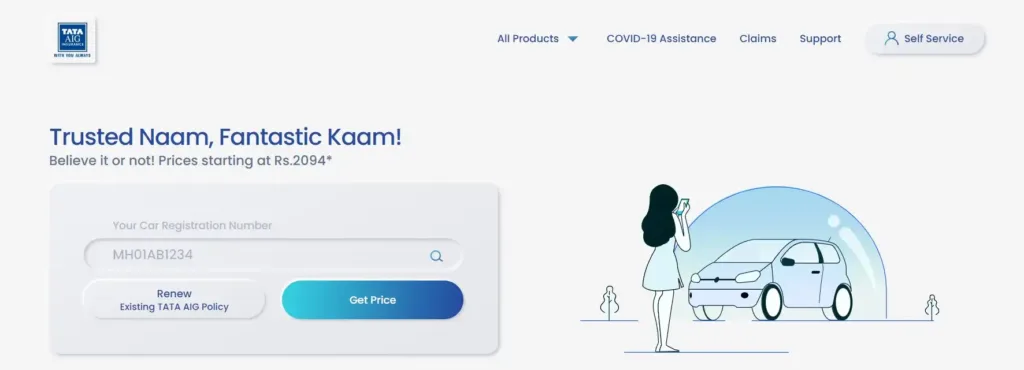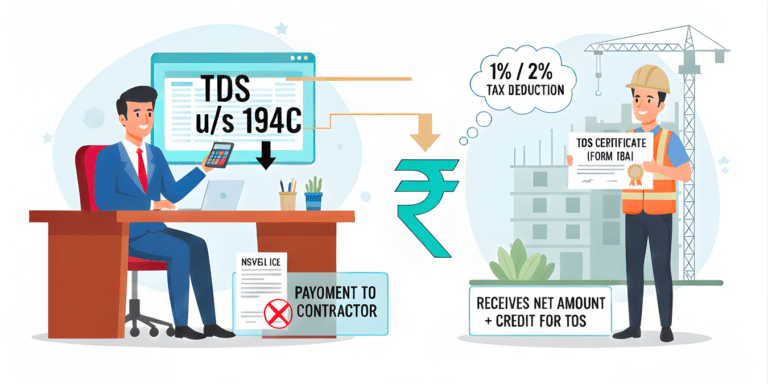
Facing a massive LTCG Tax bill in 2025? Discover the secrets of Sections 54, 54F, and 54EC to slash your taxes! These powerful exemptions can save crores on property, shares, or land sales. Reinvest smartly or opt for bonds—your choice decides your savings. With Budget 2024’s 12.5% LTCG rate and Rs. 10 crore caps, the stakes are high.
Selling your cherished family home, only to be hit with a staggering tax bill on the profits. Heart-stopping, isn’t it? What if you could transform that liability into substantial savings? Welcome to the world of capital gains tax exemptions under India’s Income Tax Act. Sections 54, 54F, and 54EC are not mere regulations—they’re strategic lifelines for savvy taxpayers. In 2025, with India’s property market soaring and tax laws evolving, mastering these provisions could save you crores. Ready to unravel the mystery?
The Sting of Capital Gains Tax
Capital gains tax India 2025, especially for property sales. Budget 2024, effective from July 23, 2024, set long-term capital gains (LTCG) tax at 12.5% without indexation for assets sold post-date. For assets acquired before, you can opt for 20% with indexation if it lowers your tax. But here’s the twist: exemptions like Section 54 can erase this burden entirely. Curious? These sections let you reinvest gains to defer or eliminate tax. Income Tax Department data reveals millions claim these annually, yet many miss out due to overlooked rules. Don’t join them—let’s decode the secrets.
Understanding Capital Gains: The Basics
Capital gains arise when you sell an asset—property, shares, or gold—for more than its purchase cost. Short-term capital gains (assets held under 24 months) are taxed at your income slab rates. Long-term gains (over 24 months) face a flat 12.5% tax in 2025, per Budget 2024. Exemptions under Sections 54, 54F, and 54EC target LTCG, redirecting profits to save tax. Suspense builds: which section suits your scenario? Let’s start with the homeowner’s favorite—Section 54.
Demystifying Section 54: Exemption on Residential Property Sales
Section 54 exemption India 2025 is a game-changer for residential property sellers. Sell a long-held home and reinvest in another? Tax-free magic unfolds. This exemption applies only to individuals and Hindu Undivided Families (HUFs). The sold asset must be a residential property held for over 24 months, taxable under “Income from House Property.”
Key Conditions:
- Reinvest capital gains in a new residential property in India.
- Purchase within one year before or two years after the sale, or construct within three years.
- Exemption amount: Lesser of the capital gains or the cost of the new property.
- Example: Sell a house for a Rs. 2 crore gain, invest Rs. 1.5 crore in a new home—exempt Rs. 1.5 crore, tax Rs. 50 lakh at 12.5% (Rs. 6.25 lakh).
Here’s the suspense: a cap applies. Since April 1, 2023, the maximum exemption is Rs. 10 crore, unchanged in Budget 2025. High-net-worth individuals, take note—this limits ultra-luxury reinvestments.
Can’t Reinvest Immediately?Use the Capital Gains Account Scheme (CGAS). Deposit unutilized gains by the ITR filing deadline (July 31, 2025, for FY 2024-25). Withdraw within the specified timelines (2 years for purchase, 3 for construction), or the unspent amount becomes taxable. Sell the new property within three years? The exemption reverses, and gains are taxed as short-term.
Latest Insights:Income Tax FAQs 2025 report a 15% rise in Section 54 claims post-Budget 2024, driven by the lower 12.5% LTCG rate. Why? Reduced tax encourages property sales. Pro Tip: For pre-July 2024 assets, combine with indexation to minimize taxable gains. Appealing? Section 54 is perfect for upgrading family homes. But what about non-residential assets? Enter Section 54F.
Section 54F: Broad Reach for Non-Residential Assets
Section 54F exemption unlocks tax savings for selling any long-term asset except residential property—think shares, gold, or land. Reinvest in a residential property, and you’re in the clear. Only individuals and HUFs qualify.
The Catch:Unlike Section 54, you must reinvest the entire net sale proceeds for full exemption, not just the gains. Partial reinvestment? Exemption is proportional: (Cost of new house × Capital Gains) / Net Proceeds. Example: Sell land for Rs. 5 crore (Rs. 3 crore gain), invest Rs. 4 crore in a house—exemption = (4 × 3) / 5 = Rs. 2.4 crore. Tax Rs. 60 lakh at 12.5% (Rs. 7.5 lakh).
Strict Conditions:
- Own no more than one residential house (excluding the new one) at the time of sale.
- Purchase within 1 year before or 2 years after, or construct within 3 years.
- Cap: Rs. 10 crore maximum exemption since April 2023.
- Reversal risks: Sell the new house within 3 years, or buy/construct another within 2/3 years post-sale, and the exemption is revoked.
CGAS Option: Deposit unutilized proceeds by July 31, 2025, to defer tax. Use within timelines, or face LTCG tax. Latest Data: DBS Treasures July 2025 notes NRIs increasingly leverage Section 54F for share sales, with 20% more claims post-rate cuts.
Minimize Tax Liability Tip: If you own multiple houses, sell one before the asset sale to meet the single-house rule. For NRIs, FEMA compliance is key for repatriation, per iNRI blog April 2025. No appetite for property? Section 54EC offers a bond-based escape.
Section 54EC: Bonds for Quick Tax Relief
Section 54EC exemption India 2025 targets LTCG from land or building sales—immovable property only. Unlike 54 and 54F, any taxpayer qualifies, including companies. The secret? Invest gains in specified bonds within 6 months—no property purchase required.
Eligible Bonds:
- National Highways Authority of India (NHAI)
- Rural Electrification Corporation (REC)
- Power Finance Corporation (PFC)
- Indian Railway Finance Corporation (IRFC)
Limits and Rules:
- Maximum investment: Rs. 50 lakh per financial year, unchanged in Budget 2025, per PIB.
- Exemption capped at Rs. 50 lakh—gains above are taxed at 12.5%.
- Timeline: Invest within 6 months of sale. Bonds have a 5-year lock-in (pre-2018, 3 years).
- Early redemption? Exemption reverses, gains taxable in that year.
- Example: Rs. 70 lakh gain from land. Invest Rs. 50 lakh in REC bonds—exempt Rs. 50 lakh, tax Rs. 20 lakh at 12.5% (Rs. 2.5 lakh).
No CGAS Here: Direct investment only. Bond yields hover at 5-6%, adding modest income.
Why It Appeals:Perfect for risk-averse taxpayers avoiding real estate. Pro Tip: Combine with 54/54F—use property exemptions for bulk gains, 54EC for the rest. Suspense: Bonds don’t cover shares or gold—only land/buildings.
Strategies to Minimize Tax Liability
Tax planning is your shield in 2025’s volatile market. Here’s how to slash capital gains tax:
- Compute Accurately: Use Cost Inflation Index (CII) for pre-July 2024 assets to reduce taxable gains if opting for 20% with indexation.
- Reinvest Strategically: Choose Section 54/54F for property enthusiasts; 54EC for liquidity seekers.
- Leverage CGAS: Deposit gains by July 31, 2025, to buy time for 54/54F reinvestments.
- Combine Exemptions: Sell a house (54), invest excess in bonds (54EC). Arthgyaan April 2025 reports NRIs saving crores this way.
- Time Sales: Hold assets over 24 months for LTCG benefits. Budget 2024’s 12.5% rate lowers the burden, but exemptions amplify savings.
- Unique Opportunity: Under Section 54, if gains are ≤ Rs. 2 crore, invest in two properties (once-in-a-lifetime).
- Avoid Pitfalls: Miss timelines, and pay full tax plus interest. Early sales of new assets reverse exemptions—plan holdings carefully.
Latest Tip: Angel One July 2025 highlights simplified ITR FY25 forms for easier exemption claims. Consult a CA for compliance. NRI Angle: iNRI blog emphasizes repatriation perks under 54/54F, but FEMA rules apply.
Comparison Table: Choosing the Right Exemption
| Aspect | Section 54 | Section 54F | Section 54EC |
| Eligible Assets | Residential house | Any long-term asset except residential house | Land or building |
| Eligible Taxpayers | Individuals, HUFs | Individuals, HUFs | Any taxpayer (incl. companies) |
| Reinvestment In | New residential house | New residential house | Specified bonds (NHAI, REC, etc.) |
| Investment Requirement | Capital gains (full for max exemption) | Net sale proceeds (proportional if partial) | Up to Rs. 50 lakh |
| Timelines | Purchase: 1 yr before/2 yrs after; Construct: 3 yrs | Same as 54 | Within 6 months |
| Max Exemption Limit | Rs. 10 crore (from 2023) | Rs. 10 crore (from 2023) | Rs. 50 lakh |
| Ownership Restrictions | None | Own ≤1 house at sale time | None |
| Reversal Conditions | New house sold in 3 yrs | New house sold in 3 yrs; Another bought/constructed in 2/3 yrs | Bonds redeemed early (5 yr lock-in) |
| Best For | Upgrading homes; High gains | Diversifying from non-property assets | Quick, low-risk; No property intent |
| 2025 Updates | Cap unchanged; 12.5% LTCG rate | Same; NRIs favor for shares | Limit steady; Yields 5-6% |
This table clarifies choices. Section 54 suits house flips, 54F diversifies non-property assets, and 54EC offers simplicity.
NRIs: Special Perks and Pitfalls
Non-Resident Indians (NRIs) can claim all three exemptions, but with nuances. Section 54 and 54F require reinvestment in Indian properties, per goinri.com. Section 54EC bonds are NRI-eligible, but the sold asset must be in India. TDS applies on property sales—buyers deduct at 12.5% (plus surcharge/cess) for LTCG. NRI Tip: Apply for a tax exemption certificate to avoid TDS, or use CGAS for flexibility. FEMA compliance is critical for repatriating proceeds.
Why 2025 Is the Year to Act
India’s property market is booming, per Knight Frank India 2025, with residential prices up 10-15% in major cities. Volatile markets and inflation make exemptions a hedge. Budget 2024’s 12.5% LTCG rate lowers the tax burden, but exemptions like 54, 54F, and 54EC maximize savings. Latest ITR forms streamline claims, per Angel One. Don’t miss the July 31, 2025, deadline for CGAS deposits or ITR filings.
Wrapping Up: Empower Your Tax Journey
The suspense is over. Sections 54, 54F, and 54EC aren’t just tax exemptions—they’re wealth-building tools. With Rs. 10 crore caps (54/54F) and Rs. 50 lakh limits (54EC), 2025 is ripe for tax-smart moves. Plan reinvestments, leverage CGAS, and consult experts to minimize tax liability. Curious for more? Visit the Income Tax portal for ITR forms or connect with a CA. Your next sale could be a tax-saving triumph. Capital gains tax exemption India 2025 awaits—seize it!

































